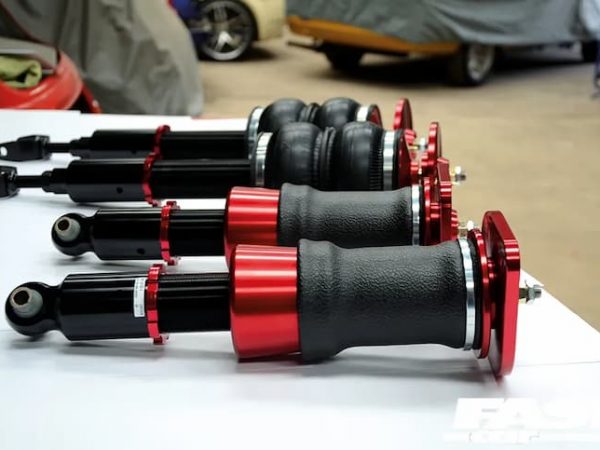27
Dec

Until recently, most cars were fitted with mechanical springs and shocks to absorb road imperfections and offer a tolerable ride. That has all changed, especially at the higher end of the market, with luxury brands pushing innovative suspension setups that don’t compromise on comfort or performance. Air suspension in different guises and names has become standard gear on higher trims but is slowly and surely making its way into the mainstream. Its popularity is based on adjusting the ride height in the air springs for changing driving and road conditions. This can be done within seconds and improves handling, cornering and braking performance, while the car glides over potholes and bumps with ease.

The whole setup consists of quite a few air suspension system components, with reinforced air bellows at their centre. These take the place of conventional coil springs, and like coils are progressive, so can be adjusted to differing air pressures and essentially lower or lift the car as needed. Air to the bellows is supplied from reservoirs and tanks through plumbing components, while complex management systems work out how much air pressure is needed in each air bag to level out the car.
Air suspension has been a standard component of heavy vehicles like trucks and buses where they deal with changes to weight distribution and increasing stability. Recent technological advancements, like incorporating ride height and pressure sensors, and higher availability have meant lower prices and setups well-suited to passenger vehicles.
While at first glance complex, air suspension has been perfected to offer numerous benefits for a variety of vehicles. This is all down to parts that are tailored to the specifics of each vehicle: The major components include:

If luxury car and SUV brands are making the shift to air suspension system components in all their vehicles, it’s because of the long list of benefits they provide. Lowering or lifting the vehicle with a simple flick of a switch (or on its own) proves handy in dozens of cases. Lower ride height stabilises vehicles when cornering, with less body sway and more control through the steering wheel. There’s more traction through the tyres, a more aero stance and more controlled braking, without excessive diving at the front or squat at the rear axle. In short, air suspension substantially improves performance and handling.
Conversely, lifting the car also has its pros. Air bellows have more leeway when traversing rougher roads and absorbing imperfections than standard coils. Moreover, the ability to lift the vehicle at each wheel is something you’ll appreciate when off-roading to get out of tight spots, particularly in 4WDs, and this trumps any lift kit currently sold. For utes and trucks, air ride suspension helps with traction at the rear axle with tubs and trays loaded to the brim, as well as when towing heavier trailers and caravans.
In this respect, air suspension is also more forgiving on related vehicle parts like control arms, and steering assemblies, but especially tyres, leading to lower wear. With lower maintenance costs for replacement parts, you’ll be recouping the initial cost of all the parts in no time, while enjoying maximum comfort, superior handling and outright convenience.